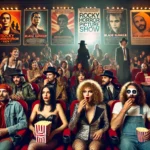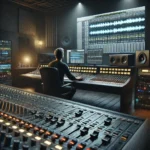Film editing is often referred to as the “invisible art” of cinema, a crucial yet subtle component that shapes the narrative and emotional flow of a movie. Over the course of its history, film editing has undergone significant transformations, driven by technological advancements, creative experimentation, and the evolving demands of storytelling. This article provides a historical overview of the major milestones in the development of film editing, tracing its journey from the early silent film era to the digital revolution of the 21st century.
The Silent Film Era: The Birth of Editing (1890s – 1920s)
In the early days of cinema, films were often shot in a single take, without any cuts or transitions between scenes. However, filmmakers quickly realized that they could manipulate time and space by cutting scenes together. One of the first pioneers of film editing was Georges Méliès, whose 1902 film A Trip to the Moon utilized basic cuts to transition between different scenes.
Another key figure was Edwin S. Porter, who directed The Great Train Robbery (1903), one of the first films to use cross-cutting to show simultaneous action happening in different locations. These early innovations laid the foundation for what would become modern editing techniques.
Key Innovations:
- Simple cuts to shift from one scene to another.
- Cross-cutting to create parallel narratives.
- Continuity editing to make the transitions smoother and less jarring for the audience.
The Classical Hollywood Era: The Rise of Continuity Editing (1930s – 1960s)
With the advent of synchronized sound in the late 1920s, film editing entered a new phase. The need to synchronize audio with visuals added complexity to the editing process, and filmmakers in Hollywood began to refine their techniques. This period is often associated with the development of continuity editing, which aimed to create a seamless, cohesive experience for viewers.
Legendary filmmakers such as D.W. Griffith advanced the use of editing to heighten emotional impact, notably in films like The Birth of a Nation (1915), where techniques like close-ups and reaction shots became standard practices. By the 1930s and 1940s, the “invisible” style of editing, where cuts are so seamless that they go unnoticed, dominated the industry.
Key Innovations:
- Match cuts to maintain visual continuity.
- Reaction shots to build emotional connections between characters.
- The 180-degree rule to ensure consistent spatial orientation.
The French New Wave and Experimental Editing (1950s – 1970s)
While Hollywood was perfecting its continuity style, filmmakers in Europe, particularly the French New Wave directors like Jean-Luc Godard and François Truffaut, began to challenge traditional editing norms. Films like Breathless (1960) introduced jump cuts, a technique that deliberately disrupts continuity to create a jarring, fragmented experience for the viewer.
This period saw a wave of experimentation, not only with cuts but also with pacing, rhythm, and narrative structure. Directors like Sergei Eisenstein, with his theory of montage, emphasized the power of juxtaposition and the emotional impact of clashing images.
Key Innovations:
- Jump cuts to challenge linear narrative.
- Montage editing to convey symbolic or thematic meaning through rapid cuts.
- Discontinuous editing to break traditional film structure.
The Rise of Blockbusters and the Role of Editing (1970s – 1990s)
The 1970s marked the beginning of the blockbuster era, with directors like Steven Spielberg and George Lucas embracing fast-paced editing to match the action-driven narratives of their films. Editing became more dynamic, with quicker cuts and shorter scenes, particularly in action sequences. The influence of MTV-style rapid cutting also became prominent during this time.
Editing techniques were further enhanced by advances in technology. The Steenbeck flatbed editor replaced older editing machines, allowing editors to have more control and precision. By the 1990s, the first signs of non-linear digital editing appeared, revolutionizing the editing process with software like Avid Media Composer.
Key Innovations:
- Rapid cutting for action and pacing.
- Non-linear editing software for greater flexibility.
- Cross-genre influences blending documentary and narrative styles.
The Digital Revolution: The Modern Era of Film Editing (2000s – Present)
The 21st century saw the complete transformation of film editing, as the shift from analog to digital became the norm. Modern editors now use sophisticated software like Adobe Premiere Pro, Final Cut Pro, and DaVinci Resolve to craft films. Digital editing allows for greater experimentation with visual effects, color grading, and even AI-assisted editing.
Editors like Thelma Schoonmaker (known for her collaborations with Martin Scorsese) and Walter Murch continue to push the boundaries of what is possible in post-production, blending classical techniques with modern technology.
Key Innovations:
- Digital non-linear editing for efficiency and precision.
- Visual effects integration into editing workflows.
- AI-driven editing tools for automation and creative assistance.
Conclusion: The Future of Film Editing
As technology continues to evolve, the future of film editing is full of possibilities. AI and machine learning are beginning to assist editors in creating rough cuts, while virtual reality and 360-degree films are pushing the boundaries of traditional linear storytelling. What remains constant is the editor’s role in shaping the final film, a task that continues to blend creativity, technology, and storytelling.


